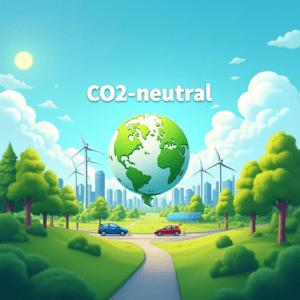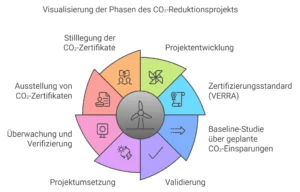Greenhouse gases are gaseous substances in the Earth’s atmosphere that contribute to warming the Earth by trapping heat. The main greenhouse gases include carbon dioxide (CO₂), methane (CH₄), nitrous oxide (N₂O), and fluorinated gases. These gases work by absorbing and re-emitting some of the thermal radiation that is radiated from the Earth’s surface back into space. This effect is called the greenhouse effect and is crucial for life on Earth, as it allows for an average temperature of about 15 °C.
Through human activities such as burning fossil fuels, deforestation, and intensive agriculture, the concentrations of greenhouse gases in the atmosphere have significantly increased since the industrial revolution. CO₂, which is mainly released through the burning of coal, oil, and gas, is the most important greenhouse gas by volume, while methane, which is produced in agriculture (especially livestock farming) and during the extraction of fossil fuels, has a much stronger warming potential. Nitrous oxide mainly comes from agriculture, particularly from the use of nitrogen-based fertilizers, and is also a potent greenhouse gas.
The impacts of the greenhouse effect are seen in the form of global warming, which in turn leads to significant climatic changes. These changes include more intense heatwaves, increased droughts, more frequent flooding, and rising sea levels, which are caused by the melting of the poles and mountain glaciers. The international community is working to reduce greenhouse gas emissions through agreements such as the Paris Agreement in order to limit temperature rise.
A comprehensive overview of greenhouse gases and their effects can be found on Wikipedia.



